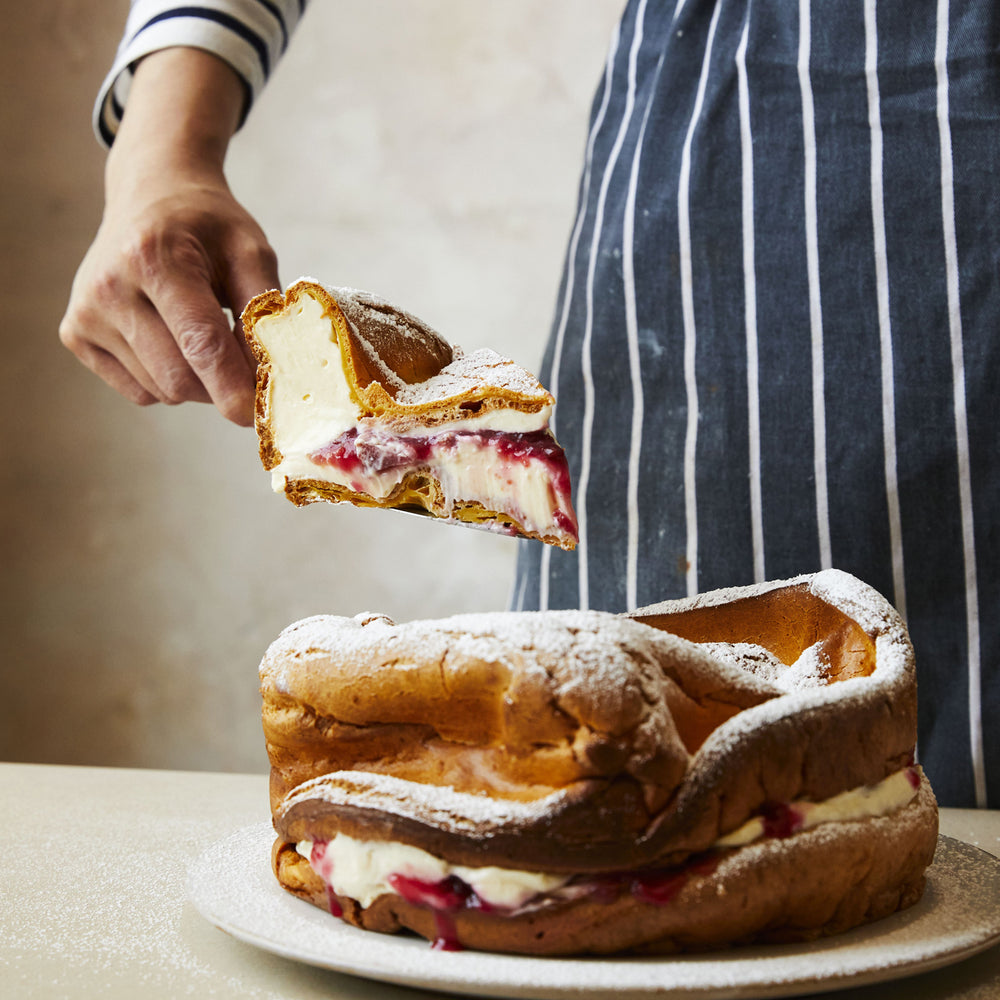We love chef, food writer, and Borough Kitchen fan Ben Lippet’s cookbook,
How I Cook: A Chef’s Guide to Really Good Home Cooking (HarperCollins) for many reasons. First, because of how clearly it articulates the ‘hows’ and ‘whys’ behind each recipe. It’s full of useful tips, from how to make sure eggshells don’t crack when boiling to why you should toast grains before cooking them – and not just because it tastes good. The recipes themselves are full of ‘add to repertoire’ potential, even if they sound intimidating at first, from Pecorino Pain Perdu to Fish Crudo with Jalapeño and Apple. It’s an excellent way to step up your cooking this autumn, and just so happens to make a wonderful gift.
With Ben’s permission, we are excerpting one of our favourite sections of
How I Cook below. It’s all about the most important ingredient in any kitchen: salt.
Types of Salt
Salt is the backbone of pretty much everything we eat, it’s the most powerful ingredient out there when it comes to enhancing, manipulating and modifying flavour and texture, and without it the word ‘delicious’ would cease to exist. The fancy scientific name for salt is sodium chloride. It’s a mineral that we need to stay alive, so much so that we actively crave it. Salt can come from many sources – from the ocean, ancient lakes, salt flats or mountain streams. These are the most common forms of salt that you’ll find in the supermarket.
-
Table Salt: Cheap and cheerful, this is the commonplace salt out there. It’s quite heavily refined and sometimes contains additives, anti-caking agents and other bits and bobs you don’t necessarily want to be tossing into your food. It can also have an artificial, metallic flavour and it is super salty.
-
Fine Sea Salt: This is the salt I use the most. It’s the salt that is left over after a pool of seawater evaporates. Sea salt carries the best flavour for me. It tastes like the sea in the best way possible, rarely has any additives and works with any ingredient. A fine sea salt can be used to season pasta water, salt a chicken prior to roasting or add a savoury edge to a caramel for a tarte tatin.
-
Kosher Salt: Traditionally used in the Jewish process of koshering, this salt has a fluffy, unique texture and is the go-to for a lot of cooks across the pond. It can be trickier to get hold of in the UK, but it is a great product. It’s not overly salty and has a clean flavour.
-
Flaky Sea Salt: The magic salt. Flaky sea salt should be used right at the end of the cooking process when you want an active crunch of sea salt. If used too early, the huge, complex crystals dissolve and are then no different to regular sea salt. Flaky salt is a little pricier than its finer counterpart, so use it wisely. You’ll feel like a true chef, grabbing a pinch of flaky salt to finish a chocolate mousse, a big fat steak or whipping it into homemade butter.
This might sound completely wild, but you should taste your salt. If you’re going to taste your food throughout the cooking process, knowing the qualities of the most important ingredient you’re using will give you a better understanding of how to use it properly. Fine sea salt doesn’t mean it’ll taste the same as table salt. Some salts are saltier than others, so a pinch of one brand won’t be exactly the same as another. Dip your finger in and give it a try! It should taste clean, oceanic and pure.
How to Use Salt (Properly)
-
The Salt Sandwich Principle: Seasoning should start early. I like to season my food at the beginning, keeping tabs on how the recipe is progressing by tasting, and adjusting the seasoning right at the end. If you don’t season at the top of the cook and just hurl in a big handful of salt at the end, your food will taste super salty.
-
Use Your Hands: Your hands are the best way to distribute salt effectively. Salt mills and shakers are okay, and they get the job done, but getting to know the texture and feel of your salt and being able to gauge exactly how much you’re using is the best way forward. Buy a pinch pot, fill it with salt, and you’re on the right track.
-
Can’t Taste? Use Your Scale: Sometimes you can’t taste the food until it’s cooked and too late to adjust. For bread and pastry recipes, always measure with a teaspoon or digital scales before adding salt.
-
Don’t Be Afraid of Heights: The higher you sprinkle, the better the distribution, so always make sure you’re sprinkling a good distance from your food. This is especially important when you’re seasoning a piece of fish or meat before cooking. Grab a pinch of salt and sprinkle it over your chopping board from 2cm, 10cm and 30cm high. You’ll see that the higher you get, the better the spread of the salt. Hold Your Horses: Salt needs a second to work its magic. Once you’ve added it, hold on for ten seconds before tasting again.
-
Be Bold, But Go Slow: I want you to cook like a chef and be bold with your seasoning, but go steady. Once you’ve added it, you can’t get it back, so take your time and taste the whole way. If you’re nervous, you can whip out a little bowl of whatever you’re seasoning and experiment with just that to avoid spoiling the bigger batch.
When Should You Add Salt?
When you choose to add your salt is so important to how food tastes. When you season something with salt two things can happen. The salt sits on the surface of the ingredient and begins to draw out moisture; moisture then creates a solution, and the salt can then begin to penetrate the ingredient via osmosis. This is how you season meat and fish well, and why curing with salt is so effective. As osmosis draws water out of the ingredient, the salt moves in, seasoning the food. Genius! Once the salt is in, it diffuses through the ingredient, creating an even balance of salt throughout.
Some recipes require you to add salt years in advance (like cured meats, fish sauce and Tabasco), a handful call for a week (such as pastrami, corned beef and salt cod), a few need a day or two (roast chicken, leg of lamb, porchetta) and most require salt on the day – right before you cook or during the process. When cooking meat or fish, you want to get your salt on ahead of cooking. For example, when you cook a piece of chicken breast, the proteins within the meat contract and denature, squeezing moisture from the meat. If, ahead of cooking, you sprinkle the chicken breast with salt and allow it to penetrate the meat, the salt will begin to break down those proteins. When the breast is cooked, the proteins won’t tighten and contract to the same degree; instead, they’ll help to retain moisture. The larger the piece of protein, the longer it needs to be salted. If it’s a steak for one, 20 minutes will do. A prime rib for 15, then you’ll want to salt it at least a day in advance. Seafood is a little more delicate, and I find 15–20 minutes is more than enough for a portion of fish destined for the pan, though you’ll want to salt it for longer if you’re aiming to cure or dramatically change its texture.


















